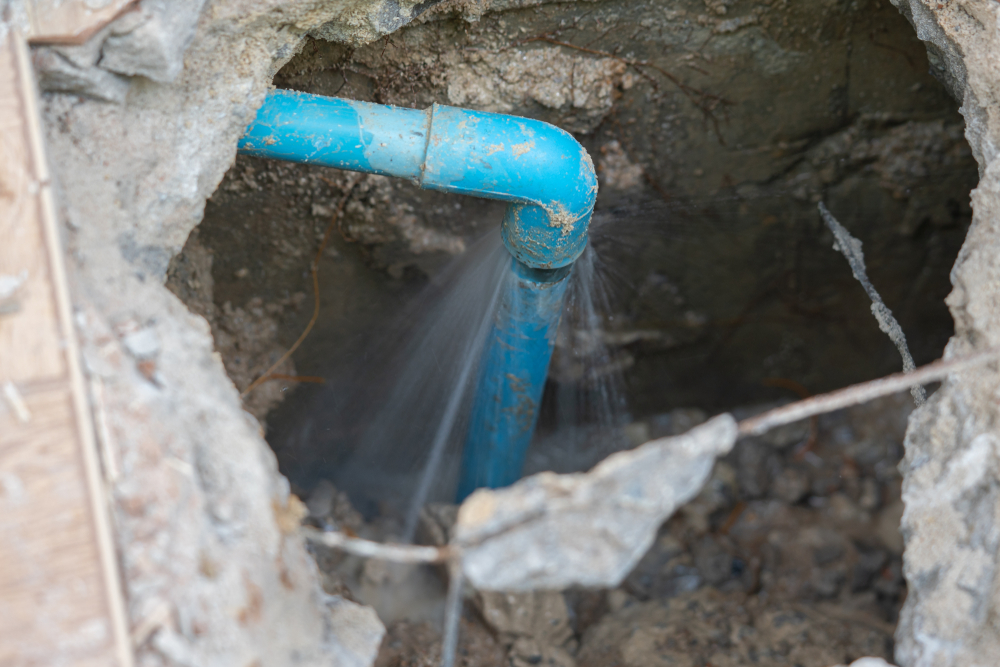Finding Hidden Water Line Leaks: 6 Smart Methods
Finding Hidden Water Line Leaks: 6 Smart Methods
Blog Article
On this page in the next paragraph you can find lots of good quality information all about Detecting hidden plumbing leaks.

Early detection of leaking water lines can mitigate a prospective calamity. Some little water leakages may not be noticeable.
1. Analyze the Water Meter
Every residence has a water meter. Inspecting it is a guaranteed manner in which helps you find leaks. For beginners, turn off all the water resources. Ensure nobody will certainly flush, utilize the tap, shower, run the cleaning equipment or dishwasher. From there, go to the meter as well as watch if it will transform. Considering that no person is utilizing it, there must be no movements. If it moves, that suggests a fast-moving leakage. If you discover no adjustments, wait a hr or 2 as well as examine back once more. This suggests you might have a slow-moving leakage that can also be below ground.
2. Check Water Intake
If you find sudden adjustments, in spite of your consumption being the same, it implies that you have leaks in your plumbing system. A sudden spike in your expense indicates a fast-moving leakage.
A stable increase every month, also with the same habits, reveals you have a sluggish leak that's also gradually intensifying. Call a plumber to thoroughly examine your residential or commercial property, particularly if you feel a cozy location on your flooring with piping beneath.
3. Do a Food Coloring Test
When it comes to water consumption, 30% comes from commodes. If the color in some way infiltrates your bowl throughout that time without flushing, there's a leakage between the storage tank and dish.
4. Asses Exterior Lines
Do not forget to check your exterior water lines as well. Should water permeate out of the link, you have a loose rubber gasket. One tiny leak can throw away bunches of water and also increase your water expense.
5. Evaluate and Examine the Situation
House owners ought to make it a behavior to examine under the sink counters and also even inside cabinets for any type of bad odor or mold growth. These 2 red flags indicate a leak so punctual focus is required. Doing routine evaluations, also bi-annually, can conserve you from a major trouble.
If you know your residence is currently old, maintain a watchful eye on your heating systems, tubes, pipes etc. Look for stainings and weakening as many pipes as well as appliances have a life span. They will certainly likewise naturally weaken due to wear and tear. Don't wait for it to escalate if you presume leaking water lines in your plumbing system. Call a professional plumber right now so you do not end up with an awful mess in your house.
Early detection of dripping water lines can reduce a potential disaster. Some tiny water leaks might not be noticeable. Inspecting it is a surefire method that helps you find leakages. One small leakage can squander lots of water and increase your water expense.
If you believe dripping water lines in your plumbing system, do not wait for it to rise.
How to Know If Your Home Has a Hidden Leak
Water Meter Reveals Inexplicable Water Usage
If you’d like to test whether or not there’s a leak somewhere in your home, you can do this using your water meter. Here is how to conduct the test:
Don’t use any water in your home for at least 30 minutes; this also means not turning on faucets or water-using appliances.
Go outside, and check your water meter for activity.
If your water meter shows that there was activity, even though no one was using any water, this proves that there is a leak in your home.Visible Mold or Mildew Growth
Leaks behind walls create moist, dark environments that allow mold and mildew to grow and thrive. Eventually, you might see mold growth forming on the wall closest to a hidden leak.
If mold is growing in an area that receives a high amount of moisture, such as a bathroom, it may simply be an indication that better ventilation is needed. However, if you see mold growth on a wall or the ceiling in an area where you would not expect, you probably have a hidden leak.
Musty, Mildew Odor
Sometimes you might not be able to see the mold or mildew that is growing as a result of a leak. However, the smell can give the problem away just as easily. If you catch a whiff of something musty, there’s a good chance that old water is collecting somewhere in your home that you can’t see.
Stained/Warped Walls, Ceilings, or Floors
When your home soaks up water, a variety of red flags can become visible, including ceiling stains, bubbling drywall, warped walls, and sagging floors. While these issues can be caused by excess humidity, they can also be signs that a pipe or plumbing connection has started leaking behind your walls.
Inexplicably High Water Bill
After a while, you get a general sense for what your water bill should be. If you own a pool or sprinkler system, your bill will tend to be higher during summer. However, if you receive a water bill that seems especially high, and you can’t figure out what caused it, then you may have a hidden leak somewhere that’s increasing your bill.
https://www.plumbingjoint.com/blog/2019/july/how-to-know-if-your-home-has-a-hidden-leak/

I have been very enthusiastic about Hacks to detect leaks and I hope you enjoyed the new blog post. Do you know another individual who is fascinated by the subject? Why not promote it. I value reading our article about Top leak detection hacks.
24/7 emergency? We're here! Report this page